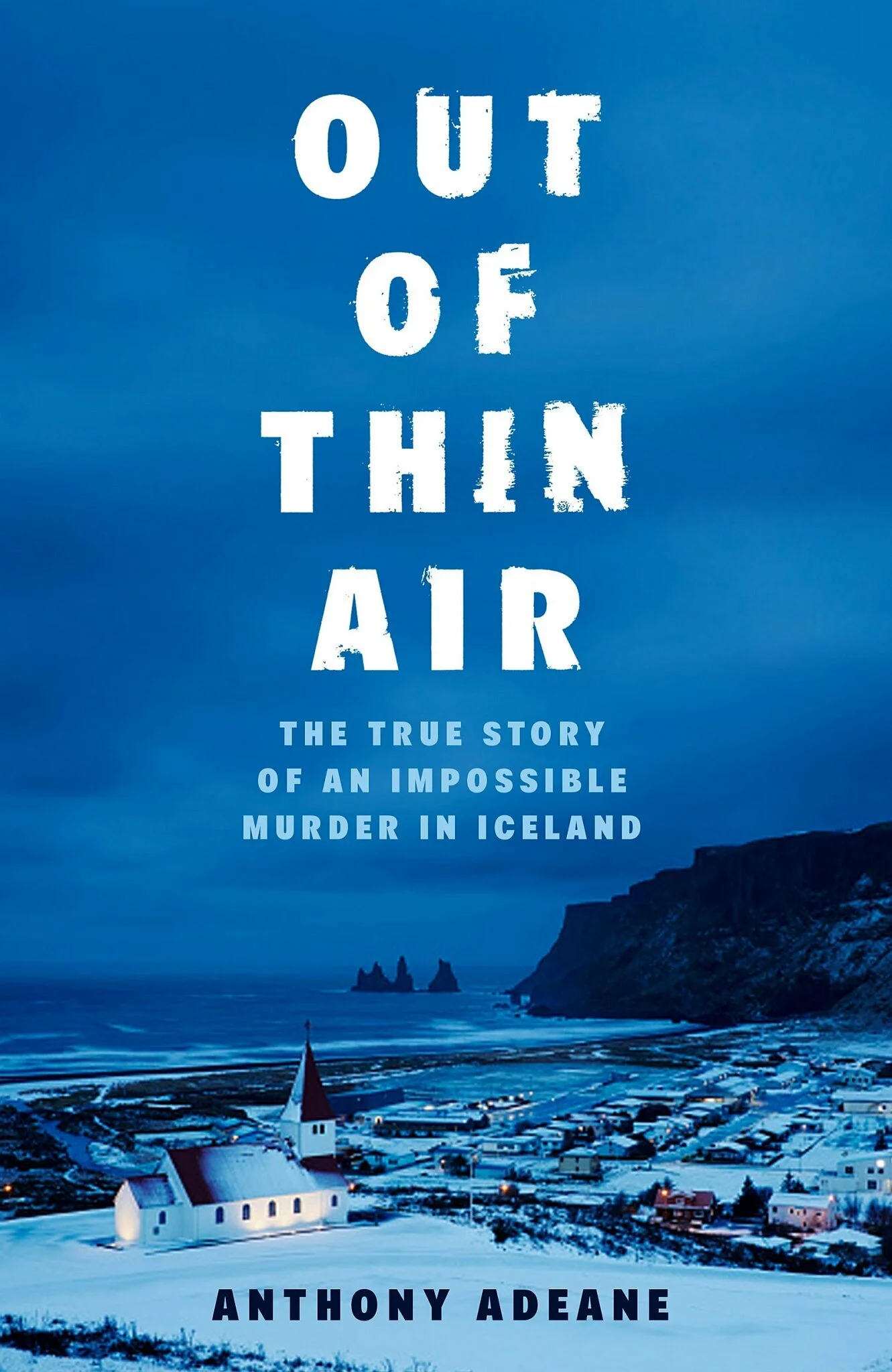It is stranger than fiction and more frightening than any Nordic Noir drama, yet the unsettling disappearances of Guðmundur Einarsson and Geirfinnur Einarsson in 1974 still continue to haunt and fascinate Iceland today.
Even for those who haven’t kept up with the case, it’s pretty easy not to become intrigued by the bizarre turn of events. Picture this: 18-year-old man goes missing walking home. Ten months later, another man (with the same surname, though not related) receives a phone call and heads out to a cafe in his car. Keys are still in car. Man doesn’t re-appear. Still no sign of other man. Six suspects are later charged for both crimes. None have a clear memory of committing either, and confess under the worst of conditions.
For British journalist, Anthony Adeane, the fascination was obvious. He first explored the case in the BBC documentary, Out of Thin Air: Murder in Iceland. Now, he’s returned with more compelling evidence and insights in a book with the same name.
Anthony recently took some time out to chat with us about his new book.

How did you first hear about the Gudumundur and Geirfinnur disappearances, and what element of it intrigued you?
I first heard about the disappearances on a BBC Radio 4 documentary. I was instantly hooked. I was initially intrigued by the bizarre details of the investigation, but as I did more research I became fascinated by how these strange cases linked to Iceland as a place. I don’t think they could have happened anywhere else.
You first pitched the idea for a documentary, which was shown on BBC. Why did you decide to follow it up as a book?
They are very different beasts! The documentary is brilliant and I am really proud to have worked on it. Inevitably there were storylines and interviewees that we could not fit into a ninety minute film. The story stretches across 45 years, dovetails with some of the most seismic moments in modern Icelandic history, and involves high-ranking MPs, nightclub owners, and criminal gangs — there is enough fascinating detail to write ten books.
As a journalist, what was the most challenging thing about investigating this story?
The amount of material, without question. The criminal cases produced over 10,000 pages of documents. Whittling down all the contradictory stories and bizarre theories into a (hopefully) taut and fast-paced read was definitely the biggest challenge.
What shocked you most through your research?
The cruelty that ordinary people are capable of.
For those who have watched the documentary, or followed the case in the media, what new information or insights can they expect to find in your book?
The book is filled with interviewees, storylines, and evidence that have never been written about or broadcast in the English language. It is my hope that even if you already know plenty about the cases, every chapter of the book will contain information that you have never heard before.


Leave a Reply